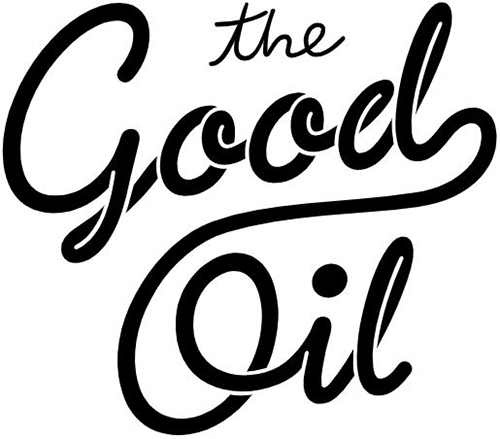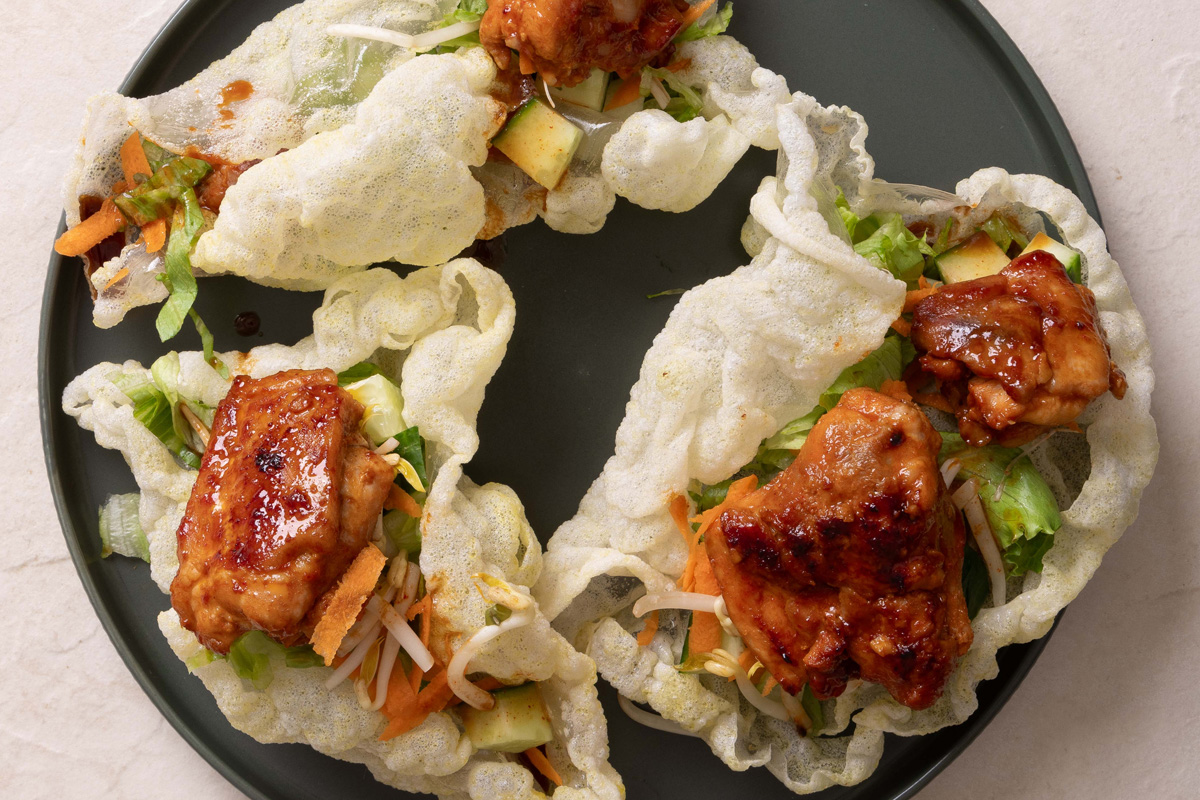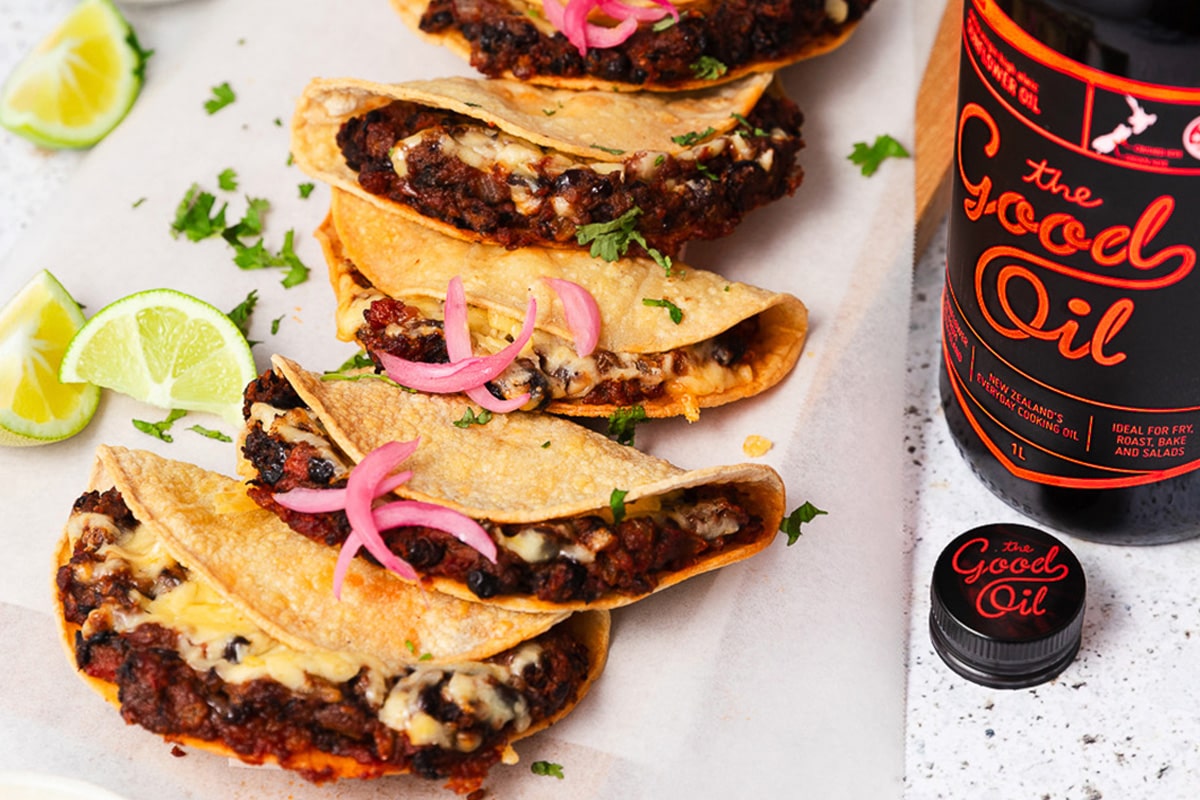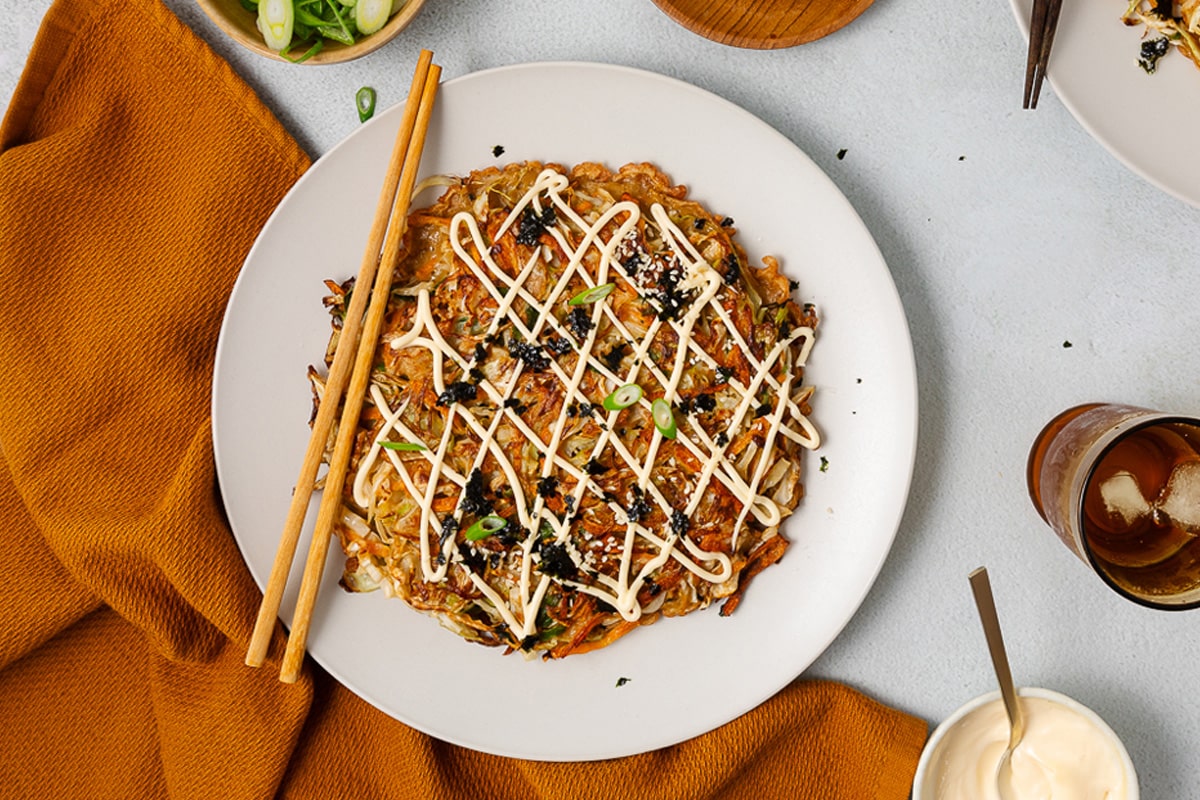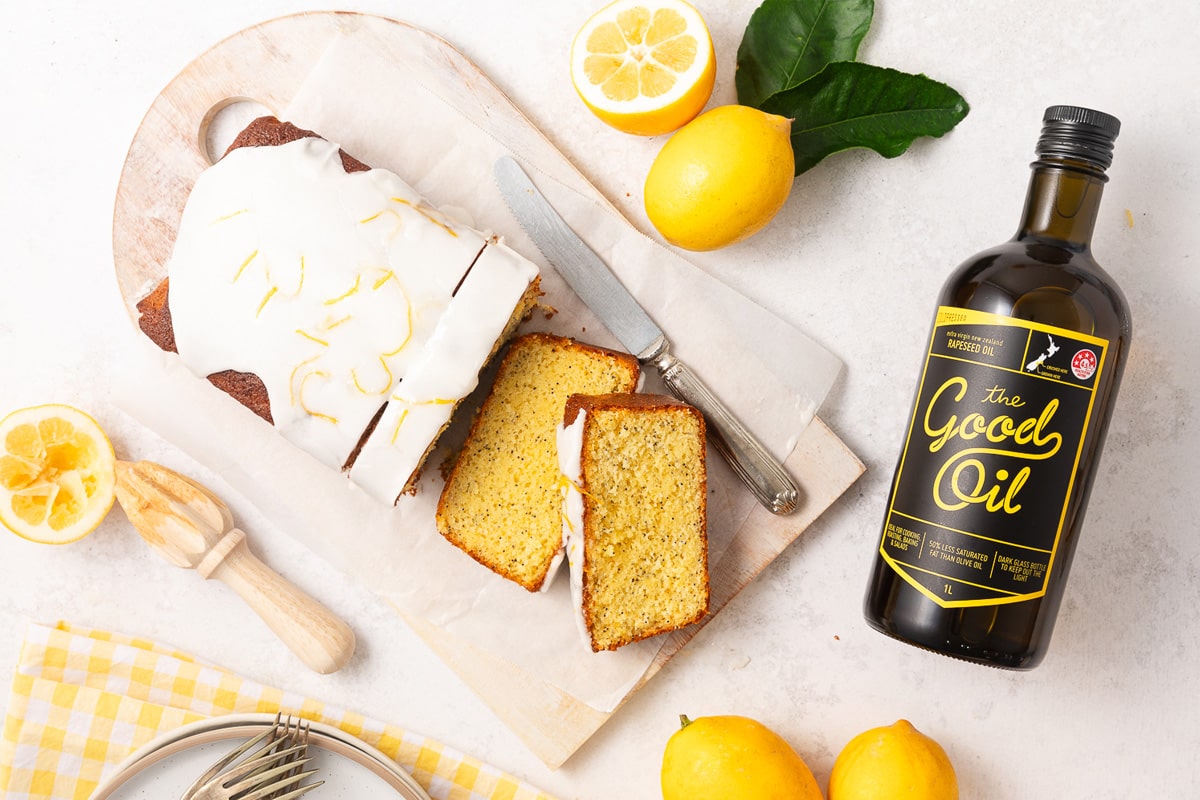The Good Oil is cold pressed. What does this mean?
Pure Oil New Zealand cold presses locally produced rapeseed using no added heat or chemicals, delivering an extra virgin rapeseed oil, which has a mild nutty taste, delicate aroma and is richly golden in appearance.
Cold pressing extra virgin rapeseed oil relies heavily on the inherent quality of the oil contained in the seed. Quality created in the farmer’s field and impacted by good agronomy, inputs and climatic conditions. Leading up to pressing, best practices for seed handling, drying and storage maintain the seed quality. In a cold pressing plant, the rapeseed oil is extracted by large screw presses, using no added heat or chemicals. The oil is then filtered to remove any remaining seed fragments. Flavourable oil qualities such as low free fatty acid and moisture levels are a reflection of quality seed at the time of crush.
The Composition of Common New Zealand Oils
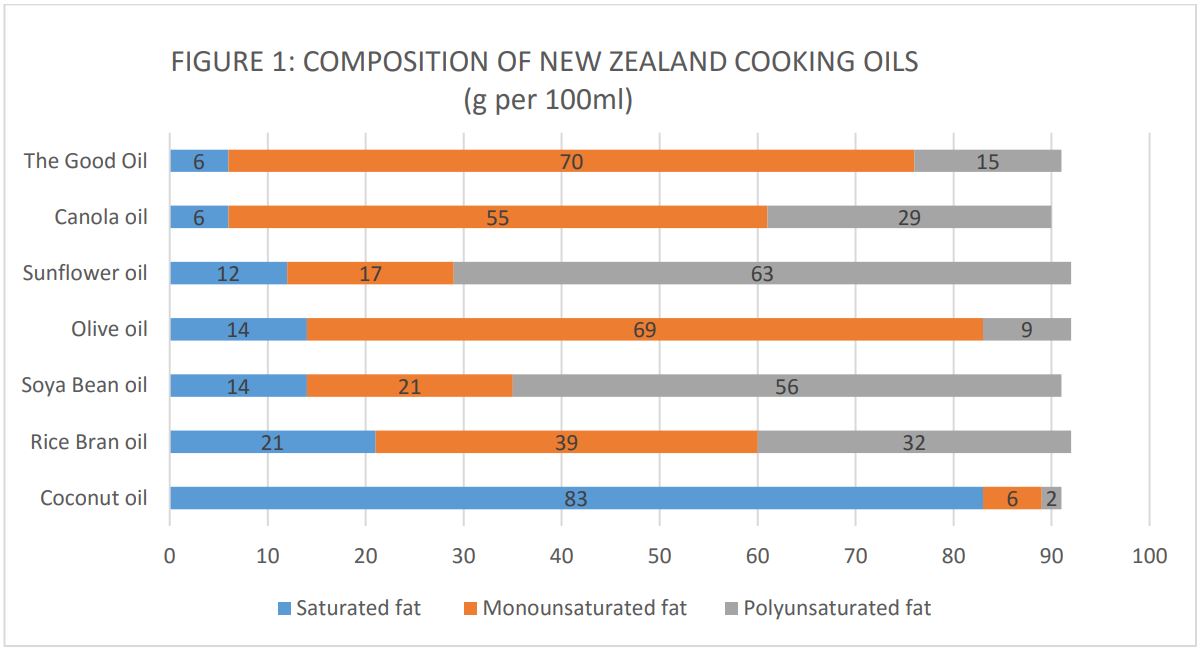
How does the Good Oil fit into a healthy diet?
The Good Oil has a flavourable and balanced nutritional profile:
Saturated Fat
The proportion of saturated fat in the Good Oil is low, at just 7%. This equates to 6g of saturated fat per 100ml, which is half the amount of saturated fat that is in olive oil (Figure 2) and the lowest saturate level seen in readily available vegetable oils.
Zero Trans Fat
On average New Zealanders eat more saturated fat than is desirable, and are encouraged to cut back on saturated fat. This includes using oils that have a higher proportion of unsaturated fats such as rapeseed oil, to prepare meals.
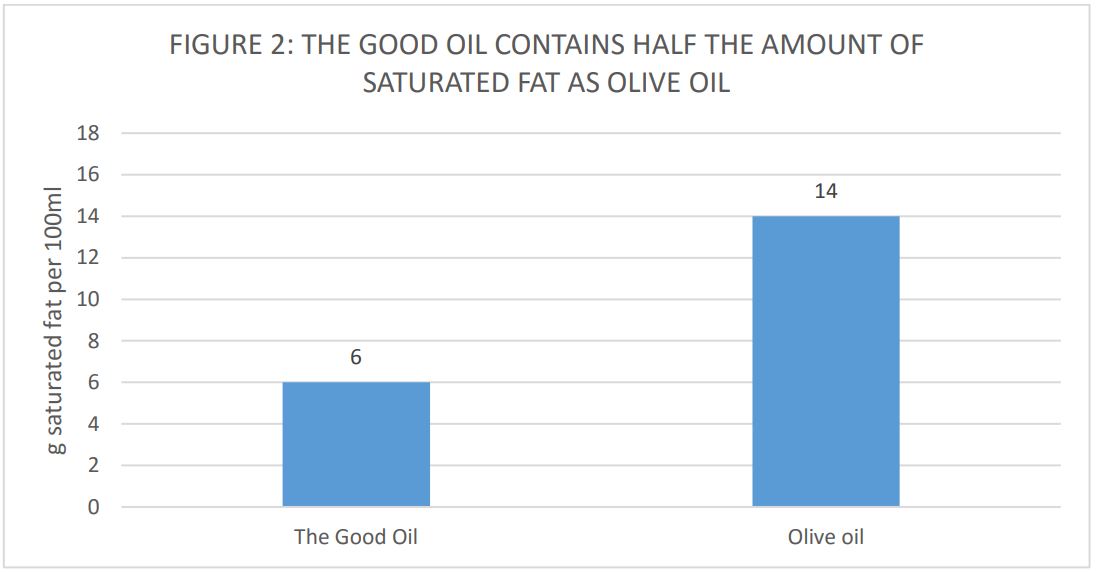
Unsaturated Fat
The Heart Foundation NZ recommend “for your heart’s health, it’s best to choose foods or cold-pressed oils with more monounsaturated and polyunsaturated fat”. The Heart Foundation NZ also acknowledge that oils rich in polyunsaturated fats are especially unstable at high temperatures and can result in oils breaking down and producing chemicals that are potentially harmful to our health. The Heart Foundation NZ recommend for home cooking, including shallow frying, barbequing, stir-frying, using oils that are both lower in polyunsaturated fat and saturated fat.
Since introducing unsaturated oils into the New Zealand diet in 1974 the death rate from heart disease has halved.
Originating from a high oleic oilseed, the Good Oil is a cold pressed rapeseed oil and contains 77% monounsaturated fat and 17% polyunsaturated fat.
Vitamin E
The Good Oil is a naturally rich source of vitamin E, an essential fat soluble vitamin and antioxidant that helps protect the body’s cells from oxidative damage. One tablespoon (15 ml) provides one-third of an adult’s daily vitamin E needs.
The Good Oil is a high quality and versatile cooking oil
Pure Oil New Zealand carefully controls each stage of The Good Oil’s manufacture to minimise the degree of oxidation and maintain its quality. Oil oxidation is an undesirable series of chemical reactions involving oxygen that degrades the oils quality. It eventually produces rancidity in the oil, with accompanying off flavours and smells.
In keeping oxidation to a minimum, Pure Oil New Zealand produces a product with low levels of free fatty acids (FFA) and a high smoke point. This makes The Good Oil a high quality oil that is versatile for cooking.
The Good Oil is produced from High Oleic rapeseed. What are the benefits?
Produced from Hi Oleic Low Linolenic (HOLL) oilseed, The Good Oil has a unique fat profile that influences the oxidation rate and heat stability of the oil.
Oleic acid is a monounsaturated fatty acid. Using High Oleic oilseed means The Good Oil has a higher monounsaturated fat content.
The level of monounsaturated oleic acid provides greater resistance to oxidation. Monounsaturated fats have a single double bond, making them less reactive and more stable under high heat.
Alpha-linolenic acid and linoleic acid are polyunsaturated fatty acids. Using low linolenic oilseed, means The Good Oil has a lower polyunsaturated fat content.
The amount of polyunsaturated fat present also makes the oil less susceptible to oxidation. Polyunsaturated fats have multiple double bonds, making them more reactive and less stable under heat.
The Heart Foundation NZ acknowledge that oils that are rich in polyunsaturated fats are especially unstable at high temperatures. And recommend for home cooking including shallow frying, barbequing, stir-frying, using oils that are both lower in polyunsaturated fat and saturated fat.
The Good Oil delivers a flavourable fat profile for stability during storage and cooking. (Figure 3).
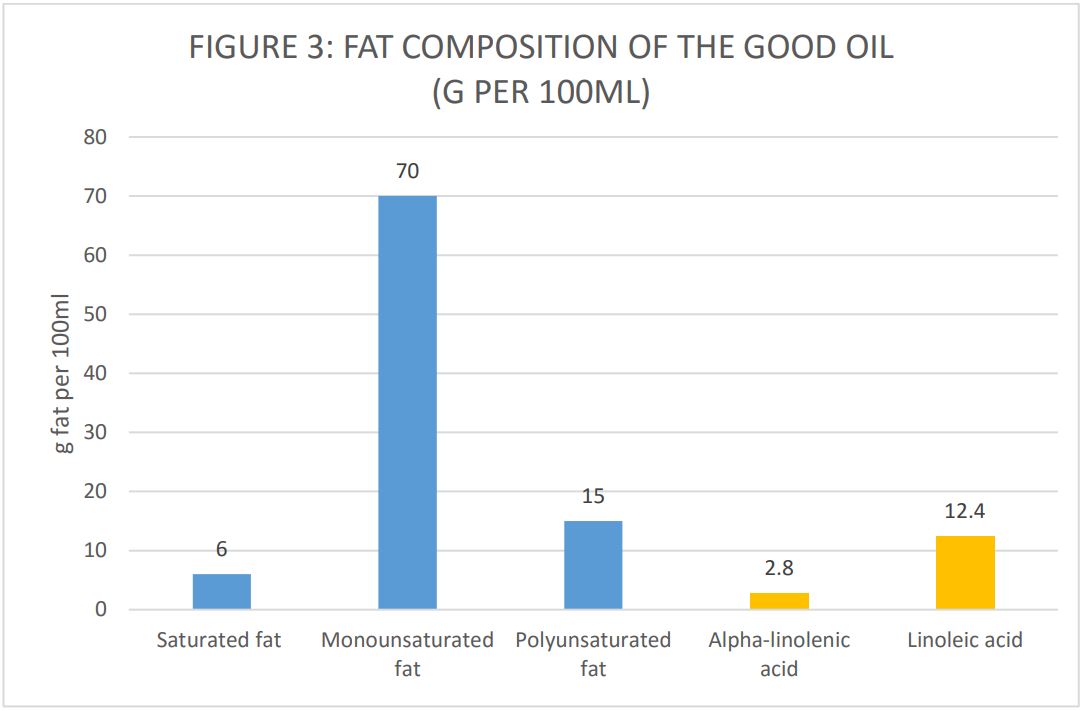
The Good Oil is a beautifully golden oil. Why is it hidden in a dark bottle?
Light (UV) can trigger oxidative degeneration of cold pressed oils. Reduced exposure of the oil to direct light by using a dark glass bottle further protects the oil from oxidative degradation.
How does the Good Oil differ from standard rapeseed/canola oil?
Canola is a cultivar of rapeseed. However the Good Oil differs from standard rapeseed/canola oil in several ways.
The Good Oil is a New Zealand grown cold-pressed rapeseed oil. Canola in the retail market is imported and extracted from seed using added heat (seed heating) and chemicals (solvent extraction). After solvent extraction the oil is refined, bleached and deodorised (RBD) to produce an odourless oil which is opaque in appearance. The RBD process does not rely on high quality seed oil as the intensive processing removes the natural flavour, scent, colour and some nutritional value of the seed oil.
- The Good Oil is produced from a high oleic low linolenic (HOLL) oilseed and has a fat composition that gives it stability during cooking and storage (Figure 3).
References
- Pure Oil New Zealand (2016). The Good Oil Cold Pressed Extra Virgin Rapeseed Oil Nutrition Information Panel
- Leading New Zealand Retail Brand of Canola Oil Nutrition Information Panel
- Leading New Zealand Retail Brand of Sunflower Oil Nutrition Information Panel
- Leading New Zealand Retail Brand of Extra Virgin Olive Oil Nutrition Information Panel
- Leading New Zealand Retail Brand of Soya Bean Oil Nutrition Information Panel
- Leading New Zealand Retail Brand of Rice Bran Oil Nutrition Information Panel
- Leading New Zealand Retail Brand of Coconut Oil Nutrition Information Panel
- Heart Foundation NZ. Eat some: healthy oils, nuts & seeds. Retrieved from http://www.heartfoundation.org.nz/healthy-living/healthy-eating/food-for-a-healthy-heart/replace-butter
- Ministry of Health (2015). Eating and Activity Guidelines for New Zealand Adults. Wellington: Ministry of Health
- National Health and Medical Research Council (2006). Nutrient Reference Values for Australia and New Zealand including Recommended Dietary Intakes. Canberra: Commonwealth of Australia
- University of Otago and Ministry of Health (2011). A Focus on Nutrition: Key findings of the 2008/09 New Zealand Adult Nutrition Survey. Wellington: Ministry of Health
- Heart Foundation NZ (2015, November 10). Which oils are safe to cook with?Retrieved from http://www.heartfoundation.org.nz/news-blogs-stories/blogs/which-oils-are-safe-to-cook-with
